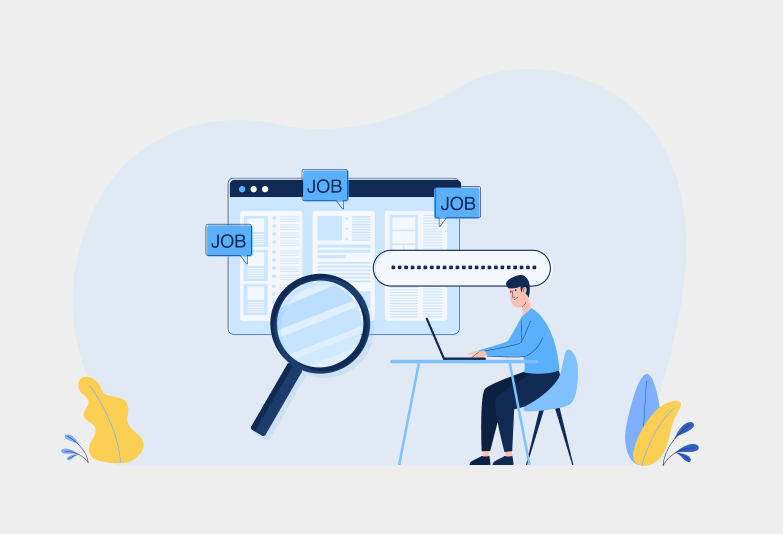Recruiting candidates isn’t just about filling the workforce gap and skill requirements. Instead, it extends further in terms of hiring suitable personnel. It focuses on adding value to the organization and seeking a culture-fit candidate.
67% of recruiters believe that the cultural fit of a prospective candidate is the primary factor in recruitment. Due to this, the HR team needs to put in place a well-thought end-to-end recruitment process.
So, we will discuss all seven stages involved in an end-to-end HR recruitment workflow.
What is the HR Recruitment Process?
From finding prospective candidates to evaluating them for final selection, the HR recruitment process is the key to maintaining a proper workforce. In other words, you need to plan the entire recruitment process. Only then can you ensure the real-time actions are aligned with the initial plan for a successful hiring and onboarding workflow.
Before we discuss the 7 steps in the recruitment process, let’s take a look at the benefits of strategic planning in HR hiring.
- With strategic planning, you can improve the quality of the hires. You can ensure the new employees add value to your organizational goals and purposes.
- It helps you identify the best personnel to bridge the gap between organizational requirements. This further makes the talent acquisition process hassle-free.
- Also, recruitment strategies ensure a higher employee retention rate for years. In other words, you carefully select professionals who adapt appropriately to the organizational culture.
- You can source candidates adequately with a proper strategy in place. This way, you won’t have to invest too much effort in repeated hiring cycles while dealing with the chances of failure.
7 Stages of the Recruitment Process
By 2030, the world will witness over 85 million talent shortages across industries. So, you can no longer leverage the age-old practices for attracting potential candidates and selecting them further. Below are seven steps for recruitment you can take to help tackle this challenge strategically in the given market scenario.
Stage 1: Identify Recruitment Needs
Firstly, you need to identify the specific recruitment needs of the organization. In other words, you should conduct a thorough analysis of the existing workforce and the prominent gaps.
This will help you understand the specific roles for which recruitment should be done. Also, it is your responsibility to understand the skill set needed for the relevant job roles. This will help you design an appealing job description across all platforms.
Stage 2: Perform Job Analysis and Job Description
In the second step of the 7 stages of recruitment, you need to focus on creating the profile of an ideal candidate. It will help you understand the detailed characteristics you want to fulfill the purpose efficiently. For instance, you can run a proper job analysis to determine the educational quality, experience level, skill set, etc.
Now, create an appealing and impactful job description. It must have a clear description of an ideal candidate profile. Also, do not forget to add all the details about the job role and the vacant position. This will help you acquire more positive responses from the candidates.
Stage 3: Source Candidates
The third step in talent acquisition is to source the right candidates. For this, choose the best software, like Jobsoid, to post the job description. It will further help you attract potential candidates according to the job description. The software helps you save time and recruit according to the skillsets required. It also automates manual tasks, so there are fewer chances of errors.
Stage 4: Screen and Evaluate Candidates
The most essential part of all stages of the recruitment process is observing the sourced candidates. To do this, you need to thoroughly analyze the resumes that have been submitted. Apart from this, you can also divide them based on the specific requirements.
This will help you identify the candidates with the right personality to fit the job description perfectly. Also, evaluation of the applications should be done through an extensive process, including an examination and personal interview.
Stage 5: Selection and Hiring
Based on the results of candidate screening and evaluation, you need to proceed further with selection and hiring. Leverage data analysis reports to make the right call for the organization.
For instance, you can use the results to choose dedicated and passionate candidates for the organization. Similarly, you can group candidates with the exact skillsets required to improve the quality of the workforce.
Stage 6: Training and Development
41% of employees look for another job if their company doesn’t provide them with proper training and development opportunities. Therefore, successful recruitment involves focusing on the onboarding process. It will help you increase the overall employee retention rate and boost their career development.
You can conduct different training sessions for all the new hires. Social events will also be crucial in creating a positive work culture. Also, establish a feedback loop to get to know the employees better.
Stage 7: Performance Management
Last but not least, you must focus on performance management. Here, you should implement appropriate strategies to evaluate the performance of the new employees. In addition to this, you should obtain their feedback on the company’s policies to modify the existing strategy.
Final Thoughts
With the attrition rate growing every year, you must follow the outlined 7 stages of recruitment. You should invest more time and effort in strategizing the methodologies. You can use Jobsoid to create custom job descriptions and attract the best talent. Book your demo today and get started with us.

 Anjali Saini
Anjali Saini 

